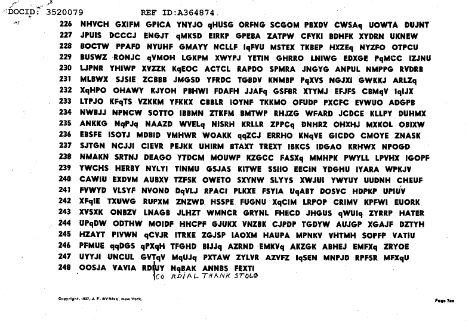The enigma surrounding the Cobain Cipher epitomizes the intersection of art, mystery, and the human psyche’s propensity to seek deeper meanings in seemingly straightforward expressions. This phenomenon is more than an obsession; it is an exploration into the intricate tapestry of messages left behind by Kurt Cobain, the quintessential rock icon whose life and untimely death shaped a generation. To comprehend the allure of the Cobain Cipher, we must delve into the realms of rock music, personal struggle, and theological introspection.
At the heart of the Cobain Cipher lies the essence of Kurt Cobain himself. Known for his raw, emotive songwriting, Cobain often articulated his inner turmoils and societal disillusionments through his art. His cryptic lyrics and ambiguous musings fostered a magnetic intrigue among fans and scholars alike. This phenomenon raises a poignant question: why do we feel compelled to decode the personal narratives of artists? In a Christian context, this fascination can reflect innate human desires for understanding, redemption, and connection to a greater truth.
Music has historically served as a conduit for spiritual expression. Within the cacophony of rock, Cobain’s work resonates with listeners on various levels. His lyrics often juxtapose feelings of despair with glimpses of hope, mirroring the biblical themes of suffering and salvation. This duality not only captivates audiences but also invites them to embark on a journey of interpretation. The Cobain Cipher represents a similar journey—a labyrinthine path coursing through the shadows of his emotional landscape.
Ciphers, in their essence, evoke the concept of secrets waiting to be unveiled. They harness an age-old human fascination with hidden knowledge. The Cobain Cipher is no mere puzzle but rather a manifestation of Cobain’s troubled soul—a facade behind which lie truths that echo throughout his work. Scholars often scrutinize Cobain’s lyrics, seeking clarity within the ambiguity. Such an endeavor invites a multitude of interpretations, each tinged with the listener’s own experiences and beliefs, thus creating a personal cipher for each individual.
The exploration of the Cobain Cipher often leads to discussions surrounding mental health, particularly within the context of Christianity. Cobain’s struggles with fame, addiction, and depression are well-documented. This multifaceted battle against the demons within him reveals a profound truth: the human condition is fraught with pain and existential questioning. The struggle echoes biblical narratives of sin and redemption, evoking parallels with figures such as Job, who grappled with suffering and divine silence.
Moreover, the notion of the Cobain Cipher becomes a pivotal reflection on legacy. The enduring popularity of Cobain’s music exemplifies how art transcends mortality, providing a voice that resonates across generations. In this regard, decoding the cipher can be seen as an act of communion with the artist, as fans strive to piece together the fragments of his psyche. Such an endeavor reaffirms the belief in the transcendent, allowing listeners to connect with something larger than themselves—whether it be through their shared experiences of struggle or their quest for meaning.
In unveiling the mysteries of the Cobain Cipher, one must also contend with the sociocultural milieu of the early 1990s. The grunge movement emerged as a reaction to the glitzy excesses of the preceding decade. Cobain, as its emblematic figure, epitomized a cultural ethos marked by disillusionment, authenticity, and vulnerability. Accordingly, the cipher encapsulates the tensions between societal expectations and personal realities, urging listeners to confront uncomfortable truths.
In a further layer of complexity, one must consider the archetypal roles embodied within Cobain’s lyrics. He often oscillated between the roles of martyr and antihero, reflecting themes of sacrifice and defiance. This duality invites contemplation on the nature of suffering and the potential for redemption. Within a Christian framework, one may argue that Cobain’s existence and his artistic struggles serve as a stark reminder of Christ’s own suffering—a poignant parallel that evokes a deeper understanding of the human experience.
Even today, the Cobain Cipher continues to inspire myriad interpretations and artistic expressions. Musicians, writers, and fans engage in a cultural dialogue, echoing the desire to glean inspiration from Cobain’s legacy. The fascination with deciphering hidden meanings manifests through a myriad of tributes, from tribute bands to analytical essays that dissect every nuance of his work. It underscores a profound truth: the human inclination to search for meaning transcends time, art, and personal boundaries.
Ultimately, the allure of the Cobain Cipher lies not within the answers it may or may not yield but within the questions it provokes. It invites us to contemplate the fragility of life, the profundity of art, and the interplay between suffering and spirituality. In examining this iconic figure through a Christian lens, one uncovers a rich tapestry of meaning that speaks to the heart of what it means to be human. Thus, the Cobain Cipher stands as a testament to the power of rock music as a means to explore existential questions, bridging the gap between personal struggle and universal truth.








Leave a Comment